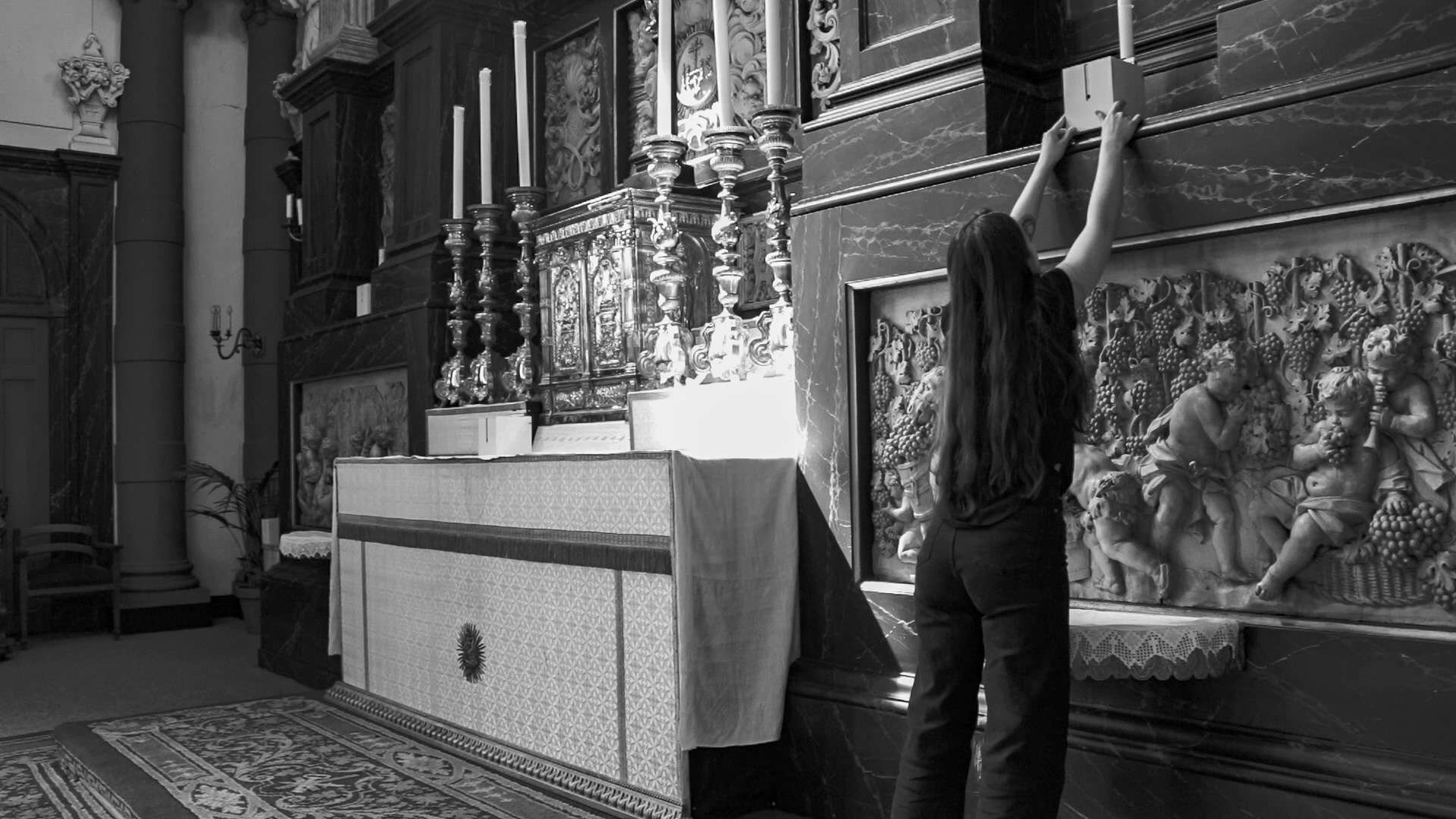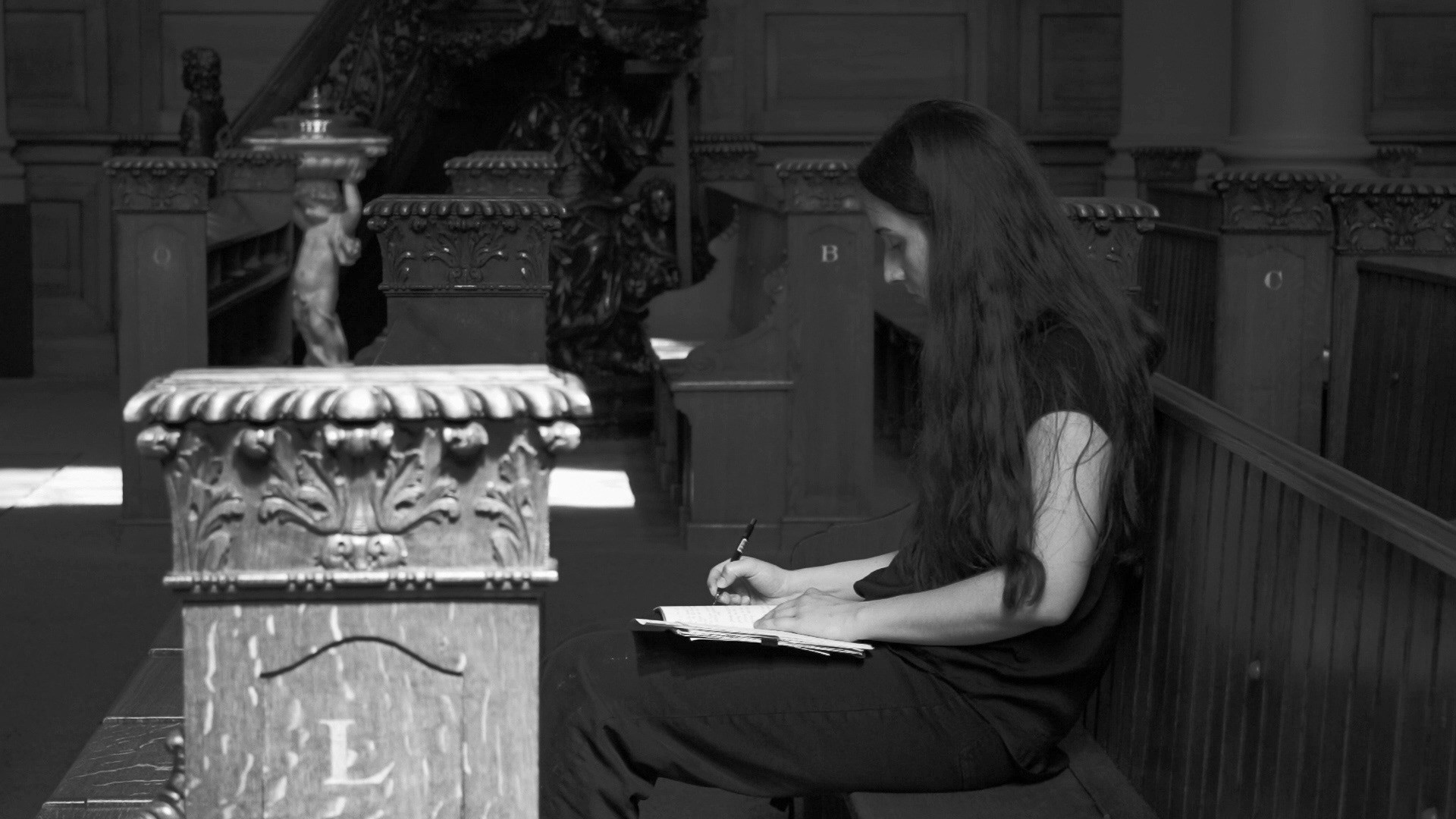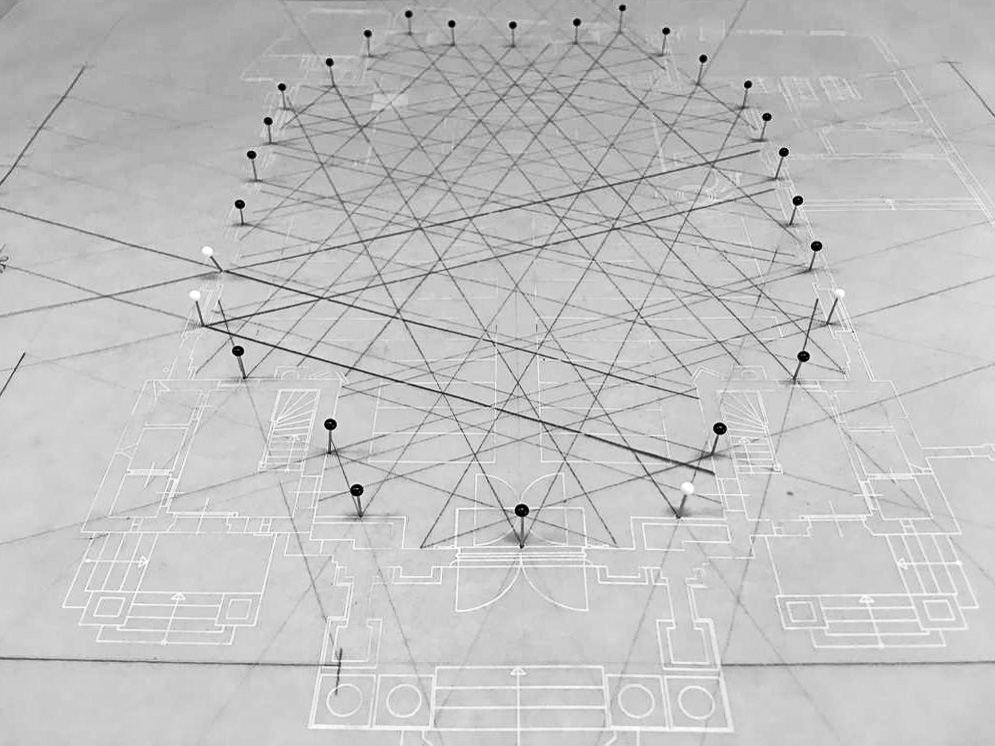
Print on silk organza. Image composed out of 29 overlapped transparent panels 85 cm x 105 cm.
POWIDOKI
Powidoki (in polish: afterimage)
1: an image that continues to appear after the exposure to the original image has ceased
2: a lasting memory
1: an image that continues to appear after the exposure to the original image has ceased
2: a lasting memory
Powidoki is self-portrait of architectural space. A multi -angled image that allows to view and experience architecture unlike before. A representation that goes beyond physical appearance and aims to capture architectural character and potential of the given place.
Designed and built by the author, 29 pinhole cameras are the basis of the unique system through which the interior can be observed and portrayed. Placed along the perimeter of the building's interior, the cameras take their positions with their back against the walls and with their eyes towards the interior. By doing so, they become part of the architecture, and their specific placements represent the point of view of the walls themselves. It seems like the cameras lend their eyes to the walls and allow them to look at eachother. And we, as spectators, are confronted with a new type of gaze - is that how the space sees itself?
For 2.5 hour of exposure, all at the same time, the cameras record... Immobilized yet active, sensitive to every micro-change occurring in the space. Finally, all of that, will be registered on the surface of photographs.






Sitlls from a movie by Francesca Giunta
In a pinhole camera, the light is not constricted to an optical corset. No mechanism is involved, no surface is in between the world and the material that this world is being drawn on. The hole, through which the light falls into the dark box and projects an inverted image on the opposite side, is being opened for all the unforeseen and accidental. The photograph is a specific trace resulting from its existence in space and time - an unaltered and unfiltered image of the space.


The collision of different angles and the collection of multiple viewpoints are composed into an „inverted panorama”, through which spectators gain insight into the dynamics of the place's multilayered structure and experience it from a very specific, and so far unknown angle.








The church’s image presents itself to the spectator by pointing to its own composition of interconnected signs and space in between them. It does so to demonstrate the narratives imprinted in place and to highlight the moments in which the space, in a state of flux, changes its character and presents itself according to circumstances. These uncapturable qualities of aura, or spirit of the place as one could call it, are not aimed to be degraded to calculable results nor flatten to mere representation. The image is a gesture which activates the gaze and shows to the spectator the paths that (s)he can traverse. It serves as communication between the space and the viewer.
The camera listens to the voice of the building and through the image allows it to speak.